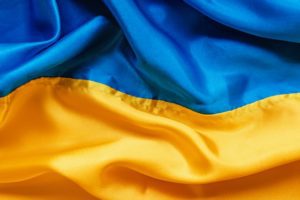
In 2020, Ukraine became a mobile ID pioneer with the launch of the Diia app. Developed by the government’s Ministry of Digital Transformation, the app was designed to function like a digital driver’s license, along much the same lines of the Apple mobile ID app that is just now starting to emerge in the United States.
Since the Russian invasion, however, the app has evolved, offering a unique glimpse of the potential impact of digital IDs during times of crisis.
Previously, the app’s functionality revolved around its use as an official, government-recognized ID, and it’s capability of allowing users to access digital government services, such as paying traffic fines or obtaining COVID-19 vaccination certificates. Since the Russian assault began, the app has been updated to help Ukrainians adjust to the disruptions of the war. Users can now easily change their registered address using Diia, and can access cash subsidies from the government for those fleeing combat zones.
Diia is also supporting those who are leaving the country. The app now lets users access remote work listings, and the Ukrainian government has established agreements with certain neighboring countries to accept the mobile ID in lieu of physical identity documents.
For many government officials around the world, these capabilities may prove to be eye-opening examples of the power of digital ID and mobile ID technology – vivid illustrations of how the flexibility of the tech can be used to maintain government services and help citizens during a time of crisis.
But the app goes even further by offering militarized capabilities that may further raise eyebrows. Ukrainians can now upload location-tagged photos of Russian targets through Diia, and can submit tips about potential saboteurs, with the data being fed to Ukrainian military intelligence. Users can also make donations to the country’s military through the app.
Speaking to Emerging Europe, Minister of Digital Transformation Mykhailo Fedorov suggested that the app can essentially turn a regular Ukrainian citizen into a kind of drone operator for the military.
“Our Diia app in wartime is not just e-documents and identification of citizens at checkpoints,” he said. “Now it is also the opportunity to donate the army; report on the movement of the enemy’s military troops and hardware; 24/7 access to TV and radio. It is also the possibility of imagining yourself as a Bayraktar operator.”
It isn’t yet clear how many Ukrainians are actually using the app’s military functions. But the app is popular: according to the Ministry, by the end of 2021 about a third of the population was using the app; and the analytics firm Sensor Tower has reported that it’s one of the top three most downloaded apps in the country.
Sources: Emerging Europe, The Washington Post, Wired

Follow Us